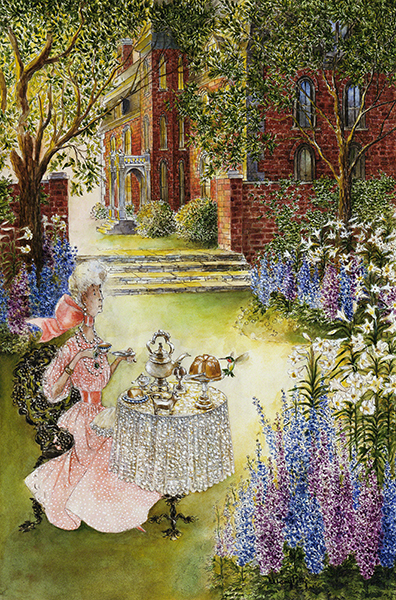Summer's Here: Mary Petty
It always seems a long time coming—and then it’s over before we know it—but summer is here! Let’s mark the occasion with a truly gifted illustrator of books and magazines, Mary Petty, whose work is best known from her illustrations and cover designs for The New Yorker magazine. Her success came during a period when men still dominated the illustration field, and she achieved it with a gentle wit, charm, and grace.
 |
| Mary Petty (1899–1976, U.S.), Summer, illustration for the cover of The New Yorker magazine, published July 18, 1959. Watercolor, pen, and ink on paper, 17" x 12 3/8" (43.4 x 31.4 cm). Courtesy of the Museum of Modern Art, New York. © 2023 Artist or Estate of Artist. (MOMA-P2908) |
Petty's covers are among the most collected of the magazine's artists. They are renowned for featuring the ongoing exploits of wealthy Upper East Side New Yorkers, particularly the fictional Peabody family. In this illustration, an older upper-class woman, possibly Mrs. Peabody, has summer afternoon tea in her impeccably maintained garden. As a person who had lived through the Great Depression (1929–1940)—an economic downturn that focused attention on the inequities between rich and poor in the U.S.—Petty presents her wealthy, spoiled people with a type of compassion. For all her trappings of “having everything,” the woman spends afternoon tea enchanted with the company of a hummingbird interested in her tea cake. The compassion is mitigated with poignant small details that would cause a viewer to say, “all the money in the world and...”
The carefully arranged compositions of Petty’s illustrations meant no text (or “thought bubbles”) was needed to explain what is going on. In Summer, she lavished detail on the garden so that the flower beds draw the viewer’s eye to the huge, gothic, forbidding-looking mansion. The profusion of white lilies could be interpreted as a symbol that the woman lives alone in the huge house, because lilies are ages-old symbols of an unmarried woman in Western art.
The New Yorker magazine, published weekly (now 47 times a year) since February 1, 1925, is famous for its biographies, short fiction, cartoons, and investigative articles. It is perhaps equally, if not more, well-known for its cover art, which has included work by many fine artists and notable graphic artists. During the 1920s and 1930s, the covers reflected the ongoing effort in progressive artistic circles to introduce Americans to types of European modern art such as Cubism. Art Deco, a watered-down form of Cubism and the machine-aesthetic of the Bauhaus, was extremely popular on covers of the 1930s.
By the end of the Great Depression, The New Yorker covers were dominated by narrative art. From the 1940s until the present, covers have ranged from significant, fleeting everyday moments to ironic parodies of important political and social events. They have also included portraits from caricatures to realistic representations of people in the news.
Born in Hampton, New Jersey, Petty was the daughter of a professor and schoolteacher. She attended the college-preparatory Horace Mann School in New York. Having drawn since she was young, she taught herself art, which showed a satiric bent even as a child. Encouraged by her future husband, cartoonist Alan Dunn (1900– 1974), Petty submitted her work to The New Yorker, and her first drawing in that magazine was published in 1927. During her career with The New Yorker, Petty produced 273 drawings and 38 ink and watercolor covers.
At the same time Petty produced covers for The New Yorker, she also furnished illustrations for books. These illustrations were often based on the characters she had created for The New Yorker. Unlike many of the cover artists for the magazine, Petty always came up with her own distinctive characters and situations, never basing her subjects on particular real events.
Correlations to Davis programs: Explorations in Art 2E Grade 1: 2.5; Explorations in Art 2E Grade 2: 2.6; Explorations in Art 2E Grade 3: 1.5; Explorations in Art 2E Grade 5: 1.7, 1.8; Explorations in Art 2E Grade 6: 1.4; Experience Art: 2.1; The Visual Experience 4E: 7.17; A Community Connection 2E: 2.1; A Global Pursuit 2E: 5.1; A Personal Journey 2E: 1.1, 2.1; Communicating through Graphic Design 2E: p. 64, p. 173, pp. 180-182


Comments